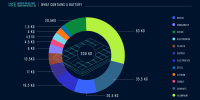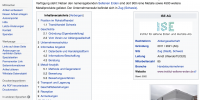Hasso Bergmann
After Beijing has already dumped export quotas at the beginning of the year, the export tax will also fall in the WTO ruling in early May. Depending on the metal, this moves between 15 and 25%. Such a measure could certainly put pressure on prices, writes the Frankfurt Tradium GmbH in its latest market report. However, Beijing in return plans to introduce a resource tax of up to 35%. This should counteract the depletion of strategically important resources and bring the market back into balance.
The prices for rare earths have again increased significantly. This is remarkable in that in the weeks leading up to the Chinese New Year celebrations a contrary price trend was usually observed. But this year is barely reported by liquidity-driven sales. From this one could derive a certain sustainability. The reasons are complex. First, many factories were closed before the New Year celebrations began. In addition, there are rumors that Beijing once again wants to buy various rare earths for state reserves on a large scale. But the increasing successes in the fight against illegal mining and smuggling have led many producers to raise prices.
Price increases are currently the strongest in the so-called magnet metals neodymium, dysprosium, terbium and praseodymium. The prices of hafnium have increased significantly in recent months. It is obvious that the two market leaders are currently struggling to keep up with the demand for high quality hafnium. At the same time, high inventories in countries such as Ukraine were massively reduced, partly because demand volumes significantly exceeded new production.
Hafnium is considered a strategic metal that has to face an increasing number of new applications and markets. Increasing demand from the aviation industry - reflected by full order books - is just one example of the current challenges. There are a number of alloys for both aerospace and gas turbines that consider hafnium to be essential.
The specialist service "Metal Pages" reports that the US budget for 2016 envisages a return to higher defense spending. After six years of regular cuts, the US government is planning additional spending of 4% to counter the rising global threats. Details reveal that a significant part of the additional expenditure should go into the modernization of surveillance and reconnaissance systems. These include satellites, telecommunications and electro-optical devices, which are a main application for the metal germanium.
Stricter trading conditions at the Chinese platform Fanya have resulted in investors selling larger quantities of indium and easing the pressure on world markets. As a result, prices have come under significant pressure. But preparations for the New Year celebrations have meant that both producers and dealers have to wait and see for indium.



